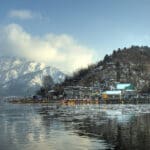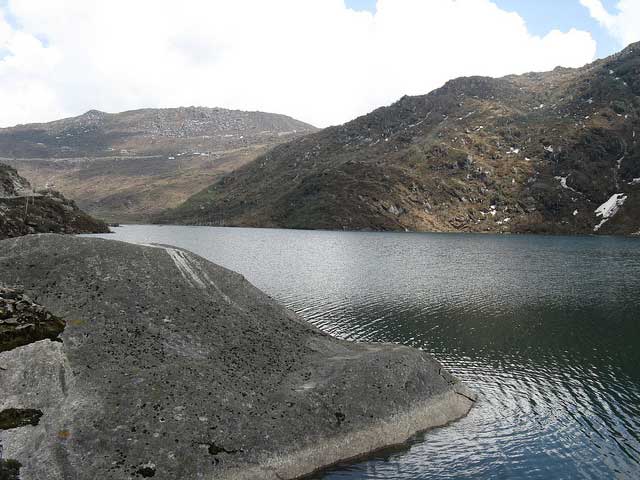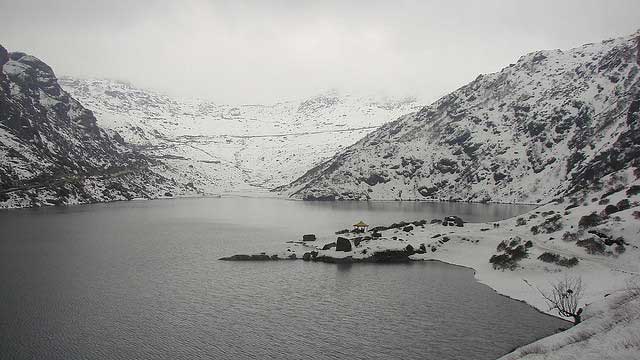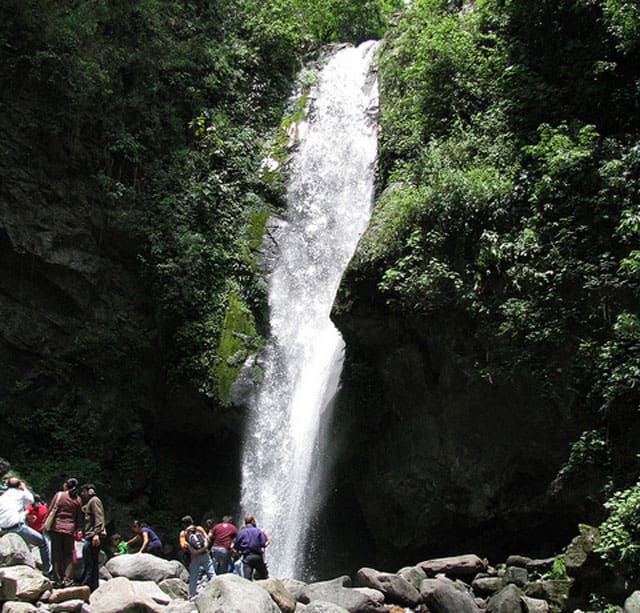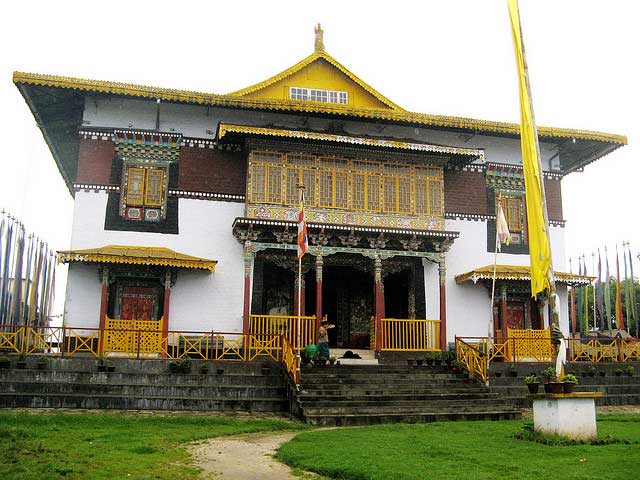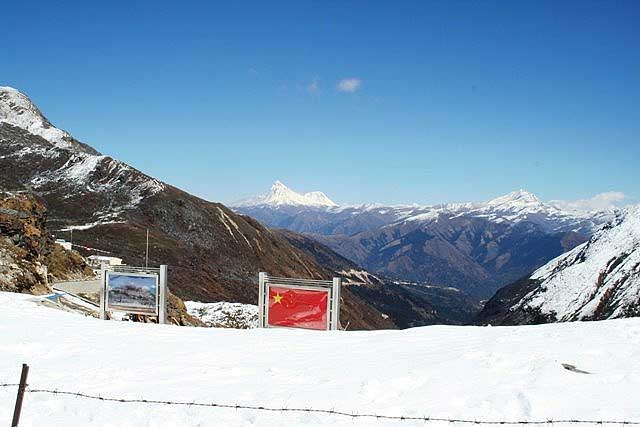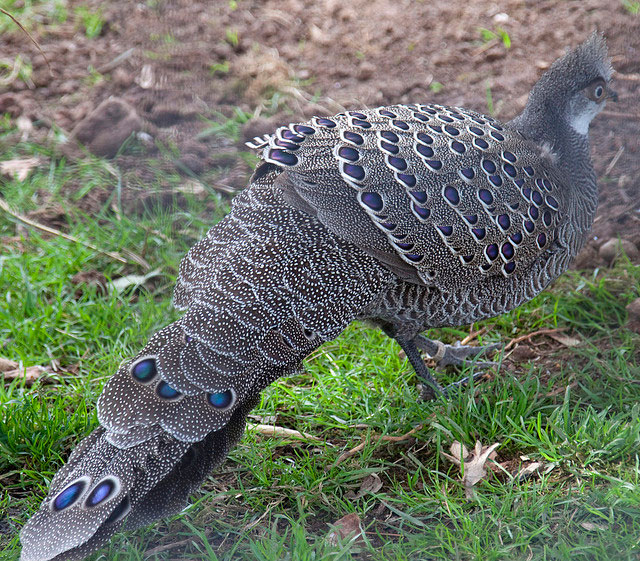Nestled amidst the majestic Eastern Himalayas , (Gangtok Hill Station) Gangtok stands as a testament to nature’s unparalleled beauty and cultural richness. As the capital city of Sikkim , this enchanting hill station has long been a magnet for travelers seeking solace in its serene landscapes, vibrant traditions, and awe-inspiring vistas. Perched at an elevation of approximately 5,800 feet above sea level, Gangtok offers a perfect blend of modernity and tradition, making it one of India’s most sought-after destinations.
Gangtok is not merely a tourist hotspot; it is a destination that captivates the soul with its lush greenery, snow-capped peaks, and pristine monasteries. Whether you are a spiritual seeker, an adventure enthusiast, or someone looking to unwind amidst nature, Gangtok promises an experience like no other. Its strategic location provides easy access to some of the most iconic landmarks in Sikkim, including the Tsomgo Lake , Nathula Pass , and Rumtek Monastery .
The charm of Gangtok lies not only in its natural splendor but also in its harmonious coexistence of diverse cultures. The city reflects a unique blend of Buddhist heritage and contemporary urban life, evident in its bustling markets, colorful festivals, and warm hospitality. Visitors are greeted with panoramic views of the Kanchenjunga , the third-highest mountain in the world, which serves as a constant backdrop to the city’s scenic allure.
For those planning their first visit, Gangtok offers a plethora of attractions and activities tailored to every kind of traveler. From exploring ancient monasteries steeped in spirituality to indulging in thrilling treks through dense forests, there is something for everyone here. The city’s well-developed infrastructure ensures a comfortable stay, while its local cuisine tantalizes taste buds with flavors unique to the region.
In this comprehensive guide, we delve into every aspect of Gangtok, offering detailed insights into its history, culture, attractions, and practical travel tips. Whether you’re planning a weekend getaway or an extended vacation, this guide will equip you with all the information needed to make your trip memorable and seamless.
History and Cultural Significance of Gangtok (Gangtok Hill Station)
To truly appreciate Gangtok, one must delve into its rich historical tapestry and understand how it evolved from a modest village to the thriving capital of Sikkim. Historically, Gangtok served as a crucial stop on the ancient Silk Route , connecting Tibet with India. This strategic position made it a hub for trade and cultural exchange, shaping its identity over centuries.
The transformation of Gangtok into a significant administrative center began during the reign of the Namgyal dynasty in the 17th century. Under their rule, Gangtok became the seat of power, fostering growth in both governance and spirituality. The construction of numerous monasteries during this period laid the foundation for the city’s deep-rooted Buddhist heritage , which continues to influence its culture today.
Culturally, Gangtok is a melting pot of traditions, where Buddhism plays a pivotal role. The city is home to several revered monasteries, such as the Enchey Monastery and Rumtek Monastery , which attract pilgrims and tourists alike. These sacred sites are not just places of worship but also centers of learning and meditation, preserving ancient teachings and practices.
Festivals form an integral part of Gangtok’s cultural fabric, reflecting its vibrant spirit and communal harmony. Events like Losar , the Tibetan New Year, and Saga Dawa , celebrating the birth of Buddha, are celebrated with great enthusiasm. Streets come alive with colorful processions, traditional music, and dance performances, offering visitors a glimpse into the region’s rich cultural legacy.
Art and craftsmanship also thrive in Gangtok, with local artisans producing intricate thangka paintings , handwoven textiles, and wooden carvings. These creations are not only souvenirs but also symbols of the region’s artistic prowess. Visitors can explore bustling markets like Lama Bazaar and MG Marg , where these treasures are displayed alongside fresh produce and local delicacies.
Gangtok’s cultural significance extends beyond its borders, serving as a bridge between India and its neighboring countries. Its people, predominantly of Lepcha , Bhutia , and Nepali descent, embody a spirit of inclusivity and warmth. This diversity is reflected in the city’s cuisine, language, and customs, creating a harmonious blend that resonates with every visitor.
Understanding Gangtok’s history and cultural nuances enriches the travel experience, allowing one to connect deeply with the essence of this remarkable hill station. It is this fusion of past and present, tradition and modernity, that makes Gangtok a destination worth exploring.
Top Attractions in Gangtok: Must-Visit Places for Every Traveler
Gangtok is brimming with attractions that cater to a wide array of interests, ensuring that every traveler finds something to cherish. From breathtaking natural wonders to architectural marvels, the city offers an unforgettable experience for all who visit. Below, we explore the must-visit places that define Gangtok’s charm and allure.
Tsomgo Lake: A Pristine Alpine Wonder
One of Gangtok’s crown jewels, Tsomgo Lake , is a glacial lake located approximately 40 kilometers from the city. Surrounded by towering snow-clad mountains, this emerald-green lake changes colors with the seasons, creating a mesmerizing spectacle. Visitors can enjoy yak rides, boating, and simply soaking in the tranquility of the surroundings. During winter, the lake often freezes, adding to its ethereal beauty.
Nathula Pass: Gateway to History
A visit to Gangtok is incomplete without experiencing the historic Nathula Pass , situated at an altitude of 14,140 feet. Once a vital link on the ancient Silk Route, this high-altitude pass connects India with China and offers stunning views of the surrounding peaks. The area is dotted with fluttering prayer flags and remnants of old bunkers, providing a glimpse into its storied past.
Rumtek Monastery: A Spiritual Haven
For those seeking spiritual enlightenment, the Rumtek Monastery is a must-visit. Located about 23 kilometers from Gangtok, this monastery is the largest in Sikkim and serves as the seat of the Karmapa lineage of Tibetan Buddhism. Its intricate architecture, ornate murals, and serene ambiance make it a haven for meditation and reflection.
MG Marg: The Heart of Gangtok
MG Marg , short for Mahatma Gandhi Marg, is the bustling heart of Gangtok. This pedestrian-only street is lined with shops, cafes, and restaurants, offering a perfect blend of leisure and commerce. Visitors can shop for local handicrafts, savor authentic Sikkimese cuisine, or simply enjoy the lively atmosphere. The street is beautifully illuminated at night, making it a popular spot for evening strolls.
Himalayan Zoological Park: A Wildlife Paradise
Nature enthusiasts will find joy at the Himalayan Zoological Park , home to a variety of rare and endangered species native to the region. Animals like the red panda, snow leopard, and Himalayan black bear roam freely in enclosures designed to mimic their natural habitats. The park also offers panoramic views of the Kanchenjunga, enhancing the overall experience.
Ban Jhakri Falls: Nature’s Masterpiece
Tucked away amidst lush forests, Ban Jhakri Falls is a hidden gem that captivates visitors with its cascading waters and mystical aura. According to local legend, the falls are inhabited by benevolent spirits known as Jhakris , who protect the area. The trek to the falls takes you through verdant trails, offering a refreshing escape from the hustle and bustle of city life.
Flower Exhibition Center: A Botanical Delight
The Flower Exhibition Center showcases the rich biodiversity of Sikkim through its vibrant displays of orchids, rhododendrons, and other exotic flora. Opened seasonally, this center is a paradise for botany enthusiasts and photography lovers alike. The meticulously maintained gardens provide a tranquil setting for relaxation and exploration.
Tashi Viewpoint: A Panoramic Vista
Perched on a ridge overlooking Gangtok, Tashi Viewpoint offers unparalleled views of the Kanchenjunga and surrounding valleys. It is especially popular at sunrise, when the first rays of sunlight bathe the landscape in golden hues. The viewpoint also houses a small café, perfect for enjoying a cup of tea while soaking in the scenery.
These attractions collectively encapsulate the essence of Gangtok, making it a destination that appeals to adventurers, spiritual seekers, and nature lovers alike. Each site tells a story, inviting visitors to immerse themselves in the city’s rich tapestry of experiences.
Adventure Activities in Gangtok: Thrills Amidst Nature
Gangtok is not just a haven for sightseers; it is also a playground for adventure enthusiasts seeking adrenaline-pumping experiences amidst breathtaking landscapes. The city’s rugged terrains, dense forests, and proximity to towering peaks offer endless opportunities for outdoor activities. Below, we explore the myriad adventure activities that make Gangtok a paradise for thrill-seekers.
Trekking: Exploring Untamed Beauty
Trekking is undoubtedly one of the most popular activities in Gangtok, thanks to its diverse trails catering to both beginners and seasoned trekkers. The Goechala Trek , though challenging, rewards hikers with close-up views of the Kanchenjunga and its neighboring peaks. For a less strenuous option, the Phurchachu Trek offers a delightful journey through rhododendron forests and quaint villages. Each trail unveils a different facet of Sikkim’s natural splendor, from cascading waterfalls to alpine meadows.
Paragliding: Soaring Above the Clouds
For those who dream of flying, paragliding in Gangtok is an experience like no other. Launching from vantage points such as Chungthang or Yumthang Valley , participants glide over verdant valleys and snow-capped peaks, enjoying bird’s-eye views of the landscape below. The sport is particularly popular during the post-monsoon months when the skies are clear and the winds favorable.
River Rafting: Riding the Rapids
The turbulent waters of the Teesta River provide the perfect setting for river rafting adventures. With rapids ranging from Grade II to Grade IV, the Teesta caters to both novices and experienced rafters. Guided tours ensure safety while offering an exhilarating ride through gorges and rocky terrains. The roaring river, flanked by lush forests, creates a thrilling yet picturesque experience.
Mountain Biking: Pedaling Through Wilderness
Mountain biking in Gangtok allows adventurers to explore remote areas inaccessible by road. Trails like the Zuluk Loop and Kupup Circuit take riders through winding paths, dense forests, and high-altitude passes. Along the way, cyclists encounter quaint hamlets, grazing yaks, and sweeping vistas of the Himalayas. This activity combines physical challenge with the joy of discovery.
Zip Lining: A Bird’s-Eye Adventure
For a quick burst of excitement, zip lining in Gangtok offers a unique perspective of the region. Suspended high above the ground, participants zoom across valleys and rivers, feeling the rush of wind against their faces. The Reshi Zip Line , one of the longest in Asia, spans over a kilometer, providing an unforgettable aerial adventure.
Rock Climbing: Scaling New Heights
Rock climbing enthusiasts will find ample opportunities to test their skills in Gangtok. The rugged cliffs around Namchi and Pelling serve as ideal spots for both beginners and advanced climbers. Professional instructors and state-of-the-art equipment ensure a safe yet challenging experience, allowing participants to conquer new heights while enjoying panoramic views.
Camping: Immersing in Nature
Camping in Gangtok offers a chance to disconnect from urban life and reconnect with nature. Popular camping sites like Thambi Viewpoint and Yumthang Valley provide basic amenities while allowing visitors to sleep under starlit skies. Bonfires, stargazing, and storytelling sessions add to the charm of spending a night in the wilderness.
These adventure activities highlight Gangtok’s versatility as a destination, appealing to those who crave excitement and exploration. Whether scaling mountains, navigating rivers, or soaring through the skies, the city promises unforgettable moments for every adventurer.
Local Cuisine of Gangtok: A Culinary Journey Through Flavors
Gangtok’s culinary scene is a delightful reflection of its diverse cultural heritage, offering a medley of flavors that tantalize the taste buds. The local cuisine draws inspiration from Tibetan , Nepalese , and Indian influences, resulting in dishes that are both comforting and exotic. Here, we delve into the rich gastronomic offerings of Gangtok, highlighting the must-try dishes and dining experiences that define the city’s food culture.
Momos: The Quintessential Street Food
No visit to Gangtok is complete without indulging in momos , the beloved dumplings that have become synonymous with the region. These steamed or fried delights are typically filled with vegetables, chicken, or pork, and served with a spicy dipping sauce. Available at roadside stalls and upscale restaurants alike, momos are a staple snack that captures the essence of Sikkimese street food.
Thukpa: A Hearty Noodle Soup
Perfect for chilly evenings, thukpa is a warming noodle soup that originates from Tibet. Made with hand-pulled noodles, vegetables, and meat (optional), this dish is flavored with aromatic spices and herbs. Often garnished with fresh coriander and chili oil, thukpa is both nourishing and flavorful, making it a favorite among locals and tourists.
Gundruk and Sinki: Fermented Delicacies
Fermented foods play a significant role in Sikkimese cuisine, and gundruk and sinki are prime examples. Gundruk, made from fermented leafy greens, and sinki, prepared from radish roots, are sun-dried and used to flavor soups and curries. Their tangy and earthy notes add depth to traditional meals, showcasing the ingenuity of local culinary practices.
Phagshapa: A Meat Lover’s Delight
For non-vegetarians, phagshapa is a must-try dish. This hearty stew features strips of pork cooked with radishes and flavored with fermented soybeans (known as churpi). The combination of tender meat and robust spices creates a rich and satisfying meal, often accompanied by steamed rice or bread.
Sel Roti: A Sweet Treat
A popular dessert during festivals, sel roti is a ring-shaped, deep-fried bread made from rice flour and sugar. Its crispy exterior and soft interior make it a delightful treat, often enjoyed with yogurt or tea. Sel roti is a testament to the Nepalese influence on Sikkimese cuisine, blending sweetness with simplicity.
Churpi: A Unique Dairy Product
Churpi , a traditional cheese made from yak or cow milk, is another distinctive element of Gangtok’s culinary repertoire. Available in both hard and soft forms, churpi is used in various dishes, from soups to snacks. Its nutty flavor and chewy texture make it a versatile ingredient, beloved by locals.
Best Dining Experiences in Gangtok
For an authentic taste of Gangtok’s cuisine, head to local eateries and street food hubs such as MG Marg and Lal Market. Restaurants like The Orchid Restaurant and Golden Tips Tea Lounge offer a mix of traditional and contemporary dishes, paired with stunning views of the surrounding mountains. Don’t miss out on sampling Sikkimese tea , renowned for its unique aroma and flavor.
Exploring Gangtok’s culinary landscape is an adventure in itself, offering a sensory journey through its rich traditions and vibrant flavors. Each bite tells a story, inviting travelers to savor the essence of this remarkable hill station.
Best Nearby Attractions: Exploring Beyond Gangtok
While Gangtok itself is brimming with attractions, its surrounding areas offer equally captivating experiences that are worth exploring. These nearby destinations not only complement the city’s charm but also provide a deeper understanding of Sikkim’s natural beauty and cultural richness. Let’s delve into some of the best nearby attractions that make this region a treasure trove for travelers.
Yumthang Valley: The Valley of Flowers
Located approximately 150 kilometers from Gangtok, Yumthang Valley is often referred to as the “Valley of Flowers” due to its vibrant blooms during spring and summer. Nestled at an altitude of 11,800 feet, this picturesque valley is surrounded by snow-capped peaks and lush meadows. The highlight of Yumthang is the Shingba Rhododendron Sanctuary , home to over 24 species of rhododendrons, which paint the landscape in vivid hues during the blooming season. Visitors can also enjoy hot springs, yak rides, and panoramic views of the Himalayas. The valley transforms into a snowy wonderland during winter, attracting adventure enthusiasts for activities like skiing.
Lachung: Gateway to North Sikkim
A quaint village located about 125 kilometers from Gangtok, Lachung serves as the gateway to North Sikkim. Known for its pristine beauty, Lachung is surrounded by towering mountains, gushing rivers, and apple orchards. It is the starting point for excursions to Yumthang Valley and Zero Point , a high-altitude destination offering breathtaking views of glaciers and snowfields. The village itself is charming, with traditional wooden houses, friendly locals, and a serene ambiance. Don’t miss the opportunity to visit the Lachung Monastery , a sacred site adorned with colorful murals and prayer flags.
Pelling: A Spiritual Retreat
Situated in West Sikkim, Pelling is renowned for its spiritual and historical significance. The town is home to the iconic Pemayangtse Monastery , one of the oldest and most revered monasteries in Sikkim. Built in the 17th century, this architectural marvel offers insights into Tibetan Buddhism and houses ancient artifacts and scriptures. Another highlight of Pelling is the Khecheopalri Lake , considered sacred by both Buddhists and Hindus. The lake is believed to fulfill wishes and is surrounded by dense forests, making it a tranquil spot for meditation and reflection.
Namchi: The Cultural Hub
Approximately 90 kilometers from Gangtok, Namchi is a vibrant town known for its cultural and religious landmarks. The Char Dham complex, a replica of India’s four holy pilgrimage sites, attracts devotees and tourists alike. Perched on a hilltop, the complex offers panoramic views of the surrounding valleys and mountains. Another must-visit attraction is the Tendong Hill , a sacred site associated with local legends. Visitors can trek to the summit for stunning vistas and learn about the region’s indigenous culture.
Ravangla: A Serene Escape
Nestled amidst rolling hills, Ravangla is a small yet enchanting town located about 65 kilometers from Gangtok. The town is famous for the Statue of Unity , a towering statue of Lord Buddha that stands atop Rabongla Hill . This massive structure, surrounded by lush gardens and prayer wheels, exudes peace and spirituality. Ravangla is also an excellent base for exploring nearby attractions such as the Ralong Hot Springs and Borong Village , known for its terraced fields and traditional architecture.
Zuluk: A Hidden Gem
For those seeking solitude and untouched beauty, Zuluk is a hidden gem nestled at an altitude of 10,000 feet. Located on the old Silk Route, this remote village offers breathtaking views of the Eastern Himalayas and the winding roads leading to Thambi Viewpoint . Zuluk is particularly popular among photography enthusiasts and nature lovers. The area is dotted with prayer flags, monasteries, and quaint homestays, providing an authentic glimpse into rural Sikkimese life.
These nearby attractions enhance the appeal of Gangtok, offering diverse experiences that cater to every kind of traveler. Whether you’re looking for adventure, spirituality, or natural beauty, these destinations promise unforgettable memories.
Best Nearby Restaurants: A Gastronomic Journey
Gangtok and its surrounding areas boast a vibrant culinary scene, with restaurants and eateries serving everything from traditional Sikkimese dishes to international cuisines. Here, we explore some of the best nearby restaurants that stand out for their ambiance, service, and delectable offerings.
The Orchid Restaurant: Fine Dining with a View
Located in the heart of Gangtok, The Orchid Restaurant is a favorite among food connoisseurs. Known for its elegant decor and panoramic views of the Kanchenjunga, this restaurant offers a fusion menu featuring Sikkimese, Nepalese, and Continental dishes. Signature items include Sikkimese thukpa , grilled pork chops , and apple pie with vanilla ice cream . The attentive staff and cozy ambiance make it an ideal spot for romantic dinners or special occasions.
Golden Tips Tea Lounge: A Tea Lover’s Paradise
For tea enthusiasts, Golden Tips Tea Lounge is a must-visit. Situated on MG Marg, this charming cafe specializes in premium Sikkimese teas, including black, green, and white varieties. Guests can sample freshly brewed teas paired with light snacks such as sandwiches, scones, and pastries. The lounge also hosts tea-tasting sessions, where visitors can learn about the art of tea-making and the unique flavors of Sikkim’s tea estates.
Sonam’s Kitchen: Authentic Local Flavors
If you’re craving authentic Sikkimese cuisine, head to Sonam’s Kitchen , a family-run restaurant known for its homely vibe and delicious dishes. The menu features classics like momos , gundruk soup , and phagshapa , all prepared using locally sourced ingredients. The restaurant’s warm hospitality and reasonable prices make it a hit among locals and tourists alike.
Cherry Village Resort Restaurant: Farm-to-Table Experience
Nestled in the outskirts of Gangtok, Cherry Village Resort Restaurant offers a farm-to-table dining experience. Surrounded by cherry orchards and organic farms, the restaurant serves fresh, seasonal produce in creative preparations. Highlights include herb-crusted trout , wild mushroom risotto , and homemade berry desserts . The serene setting and eco-friendly practices add to the overall charm of this dining destination.
New York Café: International Delights
For those missing global flavors, New York Café in Lal Market is a go-to spot. This trendy café serves a variety of international dishes, including burgers, pasta, pizzas, and steaks. Their chocolate lava cake and iced lattes are particularly popular among patrons. With its chic interiors and lively music, New York Café is perfect for casual hangouts or quick bites.
These restaurants showcase the diversity of Gangtok’s culinary landscape, ensuring that every meal is a delightful experience. Whether you’re indulging in local delicacies or savoring international favorites, the city’s dining options cater to all tastes and preferences.
Weather: Understanding Gangtok’s Climate
Gangtok’s weather plays a crucial role in shaping the travel experience, with distinct seasons offering unique opportunities for exploration. Understanding the climate helps visitors plan their trips effectively and make the most of their time in this enchanting hill station.
Spring (March to May): A Burst of Colors
Spring is arguably the best time to visit Gangtok, as the weather is pleasant, with temperatures ranging between 10°C and 20°C . This season marks the blooming of rhododendrons, orchids, and other wildflowers, transforming the landscape into a riot of colors. Clear skies and moderate humidity make it ideal for sightseeing, trekking, and outdoor activities.
Summer (June to August): Monsoon Magic
Summers in Gangtok coincide with the monsoon season, bringing frequent rainfall and lush greenery. While the weather can be unpredictable, with temperatures hovering around 20°C to 25°C , the rains create a mystical aura, shrouding the mountains in mist. This season is perfect for nature lovers who enjoy waterfalls, streams, and verdant forests. However, landslides may occasionally disrupt travel plans, so it’s advisable to check road conditions before embarking on long journeys.
Autumn (September to November): Crisp and Clear
Autumn ushers in crisp air and clear skies, making it another excellent time to visit Gangtok. Temperatures range from 5°C to 15°C , creating comfortable conditions for exploring the city and its surroundings. The post-monsoon period ensures lush landscapes, while the absence of rain allows for uninterrupted travel. This season is particularly popular for festivals and cultural events, adding vibrancy to the overall experience.
Winter (December to February): Snowy Splendor
Winters in Gangtok bring chilly temperatures, often dropping below 0°C , especially at higher altitudes. While the city itself doesn’t receive heavy snowfall, nearby destinations like Nathula Pass and Tsomgo Lake transform into snowy paradises. Winter is ideal for those seeking solitude, as tourist crowds thin out during this time. Warm clothing is essential, but the reward is breathtaking views of snow-covered peaks and frozen lakes.
Understanding Gangtok’s weather patterns ensures a seamless and enjoyable trip, allowing travelers to pack appropriately and choose activities suited to the season.
Accessibility: Reaching Gangtok from Various Parts of India
Gangtok’s accessibility has improved significantly over the years, making it a convenient destination for travelers from across India and beyond. Whether you’re arriving by air, rail, or road, there are multiple ways to reach this picturesque hill station. Below, we outline the various modes of transportation and their respective routes to help you plan your journey seamlessly.
By Air: Nearest Airport
The nearest airport to Gangtok is Bagdogra Airport (IXB) , located approximately 124 kilometers away in Siliguri, West Bengal. Bagdogra is well-connected to major Indian cities such as Delhi, Kolkata, Mumbai, and Bangalore via domestic flights operated by airlines like IndiGo , SpiceJet , and Air India . Upon arrival at Bagdogra, travelers can hire taxis or book shared cabs to Gangtok, which takes around 4-5 hours depending on traffic and weather conditions.
For international travelers, Netaji Subhas Chandra Bose International Airport (CCU) in Kolkata serves as a gateway to Sikkim. From Kolkata, one can take a connecting flight to Bagdogra or opt for a train or bus journey to Siliguri before proceeding to Gangtok.
By Rail: Nearest Railway Stations
The closest railway stations to Gangtok are New Jalpaiguri Junction (NJP) and Siliguri Junction , both located in West Bengal. These stations are approximately 120 kilometers from Gangtok and are well-connected to major cities across India. NJP, in particular, is a major hub for trains originating from Delhi, Guwahati, and other metropolitan areas.
From the railway station, visitors can hire private taxis or board shared vehicles operated by local transport services. The journey from NJP to Gangtok typically takes 4-5 hours, offering scenic views of the Himalayan foothills along the way.
By Road: Scenic Drives and Shared Taxis
Traveling to Gangtok by road is an adventure in itself, thanks to the region’s winding mountain roads and lush greenery. Several state-run and private buses operate regular services from Siliguri, Darjeeling, and other nearby towns to Gangtok. Alternatively, tourists can hire private taxis or SUVs for a more comfortable and flexible journey.
For those driving their own vehicles, the NH10 connects Gangtok to major highways leading to Siliguri and beyond. However, it’s important to note that certain areas, such as Nathula Pass, require special permits, and some roads may be closed during the monsoon season due to landslides.
Permits and Entry Requirements
As Gangtok lies within a restricted border area, Indian citizens need an Inner Line Permit (ILP) to enter Sikkim. This permit can be obtained online through the official Sikkim government website or at designated check posts en route to Gangtok. Foreign nationals require a Protected Area Permit (PAP) , which must be arranged in advance through registered tour operators or Indian embassies.
Understanding the logistics of reaching Gangtok ensures a smooth and hassle-free journey, allowing travelers to focus on enjoying the beauty and culture of this remarkable destination.
How To: Practical Tips for Planning Your Trip to Gangtok
Planning a trip to Gangtok requires careful consideration of several factors, including accommodation, permits, packing essentials, and itinerary creation. Here, we provide a step-by-step guide to help you organize your visit effectively and make the most of your time in this enchanting hill station.
Step 1: Choosing the Right Time to Visit
As discussed earlier, Gangtok experiences four distinct seasons, each offering unique experiences. If you prefer mild weather and blooming landscapes, plan your trip between March and May . For snow enthusiasts, December to February is ideal, while adventurers might enjoy the post-monsoon clarity of September to November . Avoid peak monsoon months (June to August) if you’re concerned about landslides or disrupted travel plans.
Step 2: Booking Accommodation
Gangtok offers a wide range of accommodations, from luxury resorts to budget guesthouses. Popular areas to stay include MG Marg , Lal Bazaar , and Deorali . For a premium experience, consider staying at hotels like The Elgin Mount Pandim or Mayfair Spa Resort & Casino , which offer stunning views and world-class amenities. Budget travelers can opt for homestays or lodges such as Hotel Tibet or Nor-Khill .
It’s advisable to book your accommodation well in advance, especially during peak tourist seasons like spring and autumn. Many hotels also offer package deals that include meals, sightseeing tours, and transfers.
Step 3: Obtaining Permits
Before traveling to Gangtok, ensure you have the necessary permits. Indian citizens can apply for an Inner Line Permit (ILP) online or obtain it at Rangpo Check Post upon entering Sikkim. Foreign nationals must secure a Protected Area Permit (PAP) , which requires sponsorship from a registered tour operator. Additionally, visiting restricted areas like Nathula Pass requires a separate permit, so plan accordingly.
Step 4: Packing Essentials
Packing for Gangtok depends largely on the season you’re visiting. Regardless of the time of year, essentials include:
- Warm clothing : Even in summer, temperatures can drop significantly at night.
- Comfortable footwear : Ideal for trekking and exploring uneven terrains.
- Rain gear : A waterproof jacket and umbrella are crucial during the monsoon.
- Sunscreen and sunglasses : Protect yourself from UV rays at higher altitudes.
- Medications : Carry basic first-aid supplies and any prescription medications.
For adventure activities like trekking or camping, pack items such as trekking poles, sleeping bags, and energy snacks.
Step 5: Creating an Itinerary
To maximize your time in Gangtok, create a balanced itinerary that includes sightseeing, adventure activities, and relaxation. Start with iconic attractions like Tsomgo Lake , Rumtek Monastery , and MG Marg , then venture into nearby destinations such as Yumthang Valley or Pelling . Allocate specific days for adventure sports like paragliding or river rafting, and leave room for spontaneous exploration.
Step 6: Hiring Local Guides
Engaging a local guide enhances your experience by providing insights into Gangtok’s history, culture, and hidden gems. Guides are particularly helpful for treks, monastery visits, and understanding local customs. You can hire certified guides through your hotel or authorized tour operators.
By following these practical tips, you can ensure a seamless and memorable trip to Gangtok, leaving no stone unturned in your quest for adventure and discovery.
Conclusion: Why Gangtok Should Be Your Next Travel Destination
Gangtok stands as a testament to nature’s grandeur, cultural diversity, and spiritual richness, making it a destination unlike any other in India. From its breathtaking landscapes and ancient monasteries to its thrilling adventure activities and mouthwatering cuisine, the city offers something for every kind of traveler. Whether you’re seeking solace amidst serene mountains, immersing yourself in vibrant traditions, or pushing your limits with adrenaline-pumping escapades, Gangtok promises an experience that lingers long after your journey ends.
What sets Gangtok apart is its ability to seamlessly blend modernity with tradition. While MG Marg buzzes with contemporary energy, the city’s monasteries and festivals echo centuries-old practices. Its strategic location provides easy access to some of Sikkim’s most iconic landmarks, ensuring that your itinerary remains dynamic and fulfilling.
Moreover, Gangtok’s warm hospitality and well-developed infrastructure make it a welcoming haven for tourists. With options ranging from luxury resorts to cozy homestays, the city caters to diverse preferences and budgets. The ease of obtaining permits and the availability of guided tours further simplify the travel process, allowing you to focus on creating unforgettable memories.
In conclusion, Gangtok is not just a destination; it’s an invitation to explore, connect, and rejuvenate. Whether you’re planning a solo expedition, a family vacation, or a romantic getaway, this enchanting hill station invites you to embrace its magic and discover the myriad wonders it holds.
FAQ’s with Answers
- What is the best time to visit Gangtok?
The best time to visit Gangtok is during spring (March to May) and autumn (September to November) when the weather is pleasant, and the landscapes are lush and vibrant. - How do I reach Gangtok?
You can reach Gangtok via Bagdogra Airport (124 km away), New Jalpaiguri Railway Station (120 km away), or by road from Siliguri or Darjeeling. - Are permits required to visit Nathula Pass?
Yes, visiting Nathula Pass requires a special permit, which can be obtained through registered tour operators or at designated check posts. - What are the top adventure activities in Gangtok?
Top adventure activities include trekking, paragliding, river rafting, zip lining, and mountain biking. - Which is the best place to stay in Gangtok?
Popular areas to stay include MG Marg, Lal Bazaar, and Deorali. Luxury options include The Elgin Mount Pandim, while budget-friendly choices include Hotel Tibet. - Can I visit Rumtek Monastery on my own?
Yes, Rumtek Monastery is open to independent visitors. However, hiring a guide can enhance your understanding of its history and significance. - What should I pack for a trip to Gangtok?
Pack warm clothing, comfortable shoes, rain gear, sunscreen, sunglasses, and basic medications. - Is Gangtok safe for solo travelers?
Yes, Gangtok is considered safe for solo travelers, with friendly locals and well-maintained infrastructure. - What are the must-try dishes in Gangtok?
Must-try dishes include momos, thukpa, gundruk soup, phagshapa, and sel roti. - Are there any shopping areas in Gangtok?
Yes, popular shopping areas include MG Marg, Lal Market, and Lama Bazaar, where you can buy handicrafts, woolen garments, and souvenirs.



